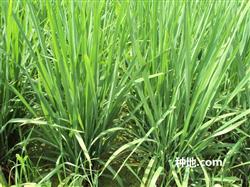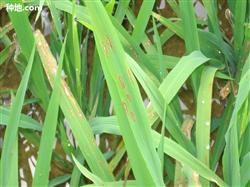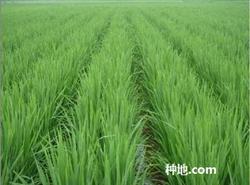When should we pay attention to the control of rice diseases and insect pests

When should we pay attention to the control of rice diseases and insect pests? In the period from rice sowing to seedling field, farmers should focus on the control of seed-borne diseases (evil seedling disease, seedling rice blast, dry tip nematode, etc.), gray planthopper, first generation borer and so on. In the rice breaking stage, emphasis should be placed on the control of diseases and insect pests such as rice planthopper, rice leaf borer, stem borer, panicle blast, rice false smut and so on. In the panicle stage of rice, rice planthopper is taken as the main control object, and other diseases and insect pests are also treated. 1. Control of rice planthopper. Farmers should increase the application of organic fertilizer, carry out soil testing and formula fertilization, frequently irrigate in shallow water, and roast the field timely and appropriately. Before the beginning of July, single-cropping rice does not use or use less chemical pesticides to create favorable conditions for the reproduction of natural enemies in rice fields. When there are 1000 young nymphs in tillering stage (more than 60% of brown planthopper)-1500 (more than 60% of white-backed planthopper), 1500 young nymphs (more than 60% of brown planthopper) from booting stage to full heading stage (more than 60% of white-backed planthopper) and 2000 young nymphs of 100 clumps after full heading stage, farmers can choose pyrazidone, buprofezin, acetonitrile, chlorpyrifos, dichlorvos and so on. For the fields with complex insect state, it is appropriate to choose the mixture of two kinds of insecticides. When using medicine, we should use sufficient amount of medicine, enough water (60 kg per mu), spray position (middle and lower part of rice plant), keep water layer (about 3 cm water layer for 5 days), increase water consumption in anhydrous field or fumigate with dichlorvos. Second, the control of rice leaf roller. Farmers should promote early development in the early stage of rice growth, roast the field timely and appropriately in the middle stage, and control the use of nitrogen fertilizer in the later stage. In the year of large occurrence, the suitable period for control is the peak period of egg hatching, which is supplemented again after 7 days, and in the year of medium occurrence, the suitable period for control is the peak period of low instar larvae. Bt and avermectin can be used for the control of Chilo suppressalis medinalis in the fourth (2) generation (when the biological pesticide Bt is selected, the suitable control period should be controlled at the peak hatching period), and avermectin, probophos, chlorobenzamide, methamectin and chlorpyrifos should be selected for the control of the fifth (3) and sixth (4) generations. Third, prevention and control of rice borer. The winter fallow fields should be ploughed and irrigated in deep water in time and kept for more than a week, and the sowing date of rice should be postponed appropriately so as to avoid and reduce the harm of the main damage generation. Rational use of drugs, development of sex attractants, demonstration application of insecticidal lamps, in order to reduce the amount of chemical pesticides. The first generation of Chilo suppressalis focused on the early rice field and the first cropping rice field, and selected Bt and its compound in the peak period of egg hatching or insecticidal single control in the peak period of 1st and 2nd instar larvae. The second generation focused on the control of single cropping rice field, and the suitable control period was in the peak period of egg hatching, and the reoccurrence area was treated again 7 to 10 days later, and the compound of methamectin, chlorpyrifos, fipronil and avermectin was selected. The first generation of Chilo suppressalis combined with the control of Chilo suppressalis, and the second generation selected to treat withered heart. When the density of eggs per mu reached more than 120, the compound agent of avermectin and insecticide were selected during the peak period of egg hatching, and the third generation was used to treat white panicles, and the compound of triazophos, monosulfonate or avermectin was used in the break period of first-season rice (when 5-10% of rice broke and exposed ears). Farmers should pay special attention to the alternating use of different types of pesticides in the process of control in order to delay the emergence of drug resistance. Try to keep the shallow water layer in the field when applying pesticide. Fourth, prevention and control of rice blast. Rice varieties should be changed in time after planting for 4-5 years. Farmers can soak rice seeds with 2500-3000 times of prochloraz or 5.5% dithiocyanate before sowing. Farmers should pay attention to the rational application of nitrogen, phosphorus and potassium, and advocate spraying foliar fertilizer. Irrigation in shallow water frequently, roasting the field timely and moderately. In the prevention and control of seedling blast and leaf blast, it is found that the central diseased plant is selected or when the diseased leaf rate reaches 3-5%, the pesticide is applied for 1-2 times. For the prevention and control of panicle blast, the susceptible varieties in the old disease areas should be strictly prevented by spraying 3-5 days before the break, and then replenished a week later. 40% rice plague, 75% tricyclazole, Bacillus subtilis, Chunramycin and so on can be selected. 5. Control of rice stripe blight. According to the performance characteristics that japonica and glutinous rice are heavier than indica rice, the provincial plant protection station suggested that the disease should be concentrated on compressed japonica and glutinous rice in rice area. expand indica rice or popularize rice varieties with good disease resistance, such as Yandao 8, Xudao 3, Yanjing 9, Wandao 119, Fengliangyou 1, Fengliangyou 4 and so on. The use of insect prevention net or non-woven cloth to raise seedlings is advocated in seriously diseased areas, and the sowing date of one-season rice is postponed appropriately, and direct seeding is advocated in order to avoid the peak of adult migration and transmission of the first generation of gray planthopper. In the mature harvest stage of wheat in seriously diseased areas, gray planthopper was commonly treated with pyrazidone, chlorpyrifos, aldicarb, etc., and timely supplementary treatment according to the pest situation. In the disease-prone areas, the second and third generations of gray planthopper eggs were hatched to the peak stage of young nymphs, and the insecticides were pyramidone, chlorpyrifos, aldicarb and so on. Sixth, prevention and control of rice false smut. Farmers can choose disease-resistant varieties such as Xieyou series, Dyou527, Xiushui 664 and so on. Ten days before the break of rice, the medicine was applied for the first time, and the break period was replenished again. Tebuconazole and well? Wax aphids, wells? Uniconazole and so on. 7. Control of rice sheath blight. When irrigating and raking the field, farmers salvage the "wave residue" blown to the edge of the field by the wind and take it out of the field for centralized treatment to reduce the initial bacterial source of rice sheath blight. Implement the rational application of nitrogen, phosphorus and potassium, and roast the field timely and moderately. In the fields where the disease cluster rate of early rice reaches 20% at booting stage and 40% at heading stage, and that of middle and late rice reaches 20% from tillering to jointing stage, it is necessary to spray and control in time. Agent can choose 24% thiofuramide suspension (full panicle), 20% Jinggangmycin wettable powder, 5% Jinggangmycin water agent, 12.5% well? Wax aphid water agent, etc., the liquid should be evenly sprayed in the middle and lower part of the rice plant. The seriously diseased fields were treated again 7-10 days after the first application. Click to get massive rice planting technology click to get massive grain planting technology
- Prev

Is there any good way to control diseases and insect pests in rice?
Is there any good way to control diseases and insect pests in rice? The success or failure of rice pest control plays a vital role in rice yield. For the prevention and control of rice diseases and insect pests, the first is to select varieties resistant to diseases and insect pests; the second is to fertilize reasonably and increase the application of organic fertilizer, phosphorus and potassium fertilizer; the third is to use water scientifically to keep the field dry and rainy.
- Next

How to control diseases and insect pests in rice?
How to control rice diseases and insect pests? What technology can learn from rice pest control methods: first, rice black sclerotia stem rot rice stem base of a fungal disease, also known as rice stem rot or micrococcosis. The pathogens are Aspergillus globulus and Aspergillus oryzae. Have a disposition.
Related
- The first cup of black tea in spring, the flavor and history of tea gardens in Kenya, Africa
- The computer can not only choose potatoes, but also grow tea rice. AI will grow winter oolong tea champion.
- It is not only the inflated tea bitten by insects, but also engraved with the four seasons tea in Beipu.
- The Oriental Beauty Tea Festival in Zhuxian County takes the stage at the weekend to experience the plus-size feast of oil tea.
- & quot; Oriental Beauty Tea & Exploration of Emei in Hsinchu, the hometown of quot;
- The new variety of strawberry "Tainong 1" dessert is the first choice with mellow aroma. Crimson gorgeous
- History of Tea in Taiwan: from Wild Inner Mountain to Export Tea Garden
- Two types of Taiwan Oriental Beauty Black Tea won the British three-Star Award for Childhood Tea Xiang Zhang Jiaqi changed from pilot to champion tea maker.
- Banana species and varieties: the planting history of Taiwan Xianren banana and dwarf banana is long, is banana disease resistant?
- Coffee planting Technology: Qianjie Coffee from Seedling to harvesting

